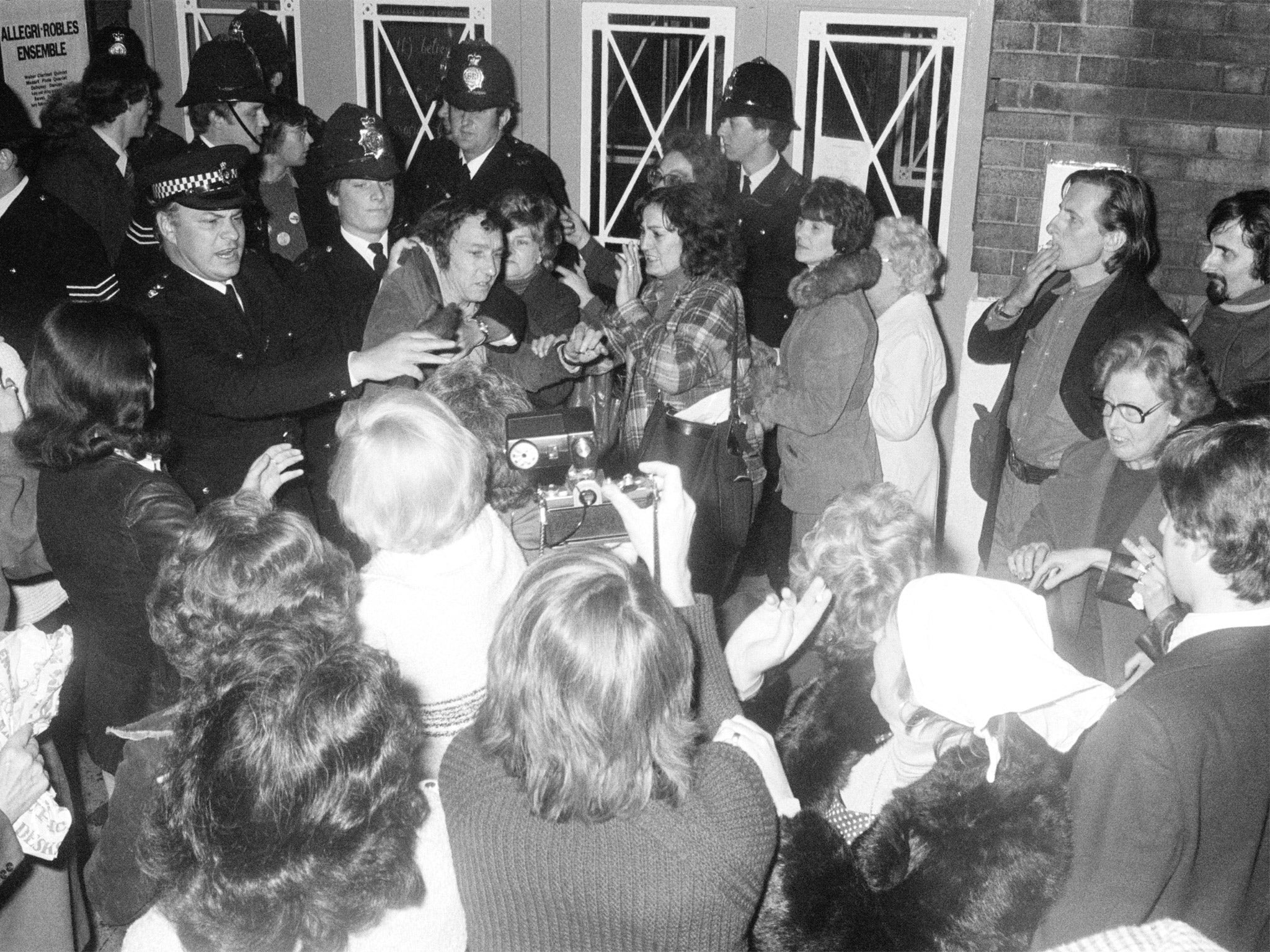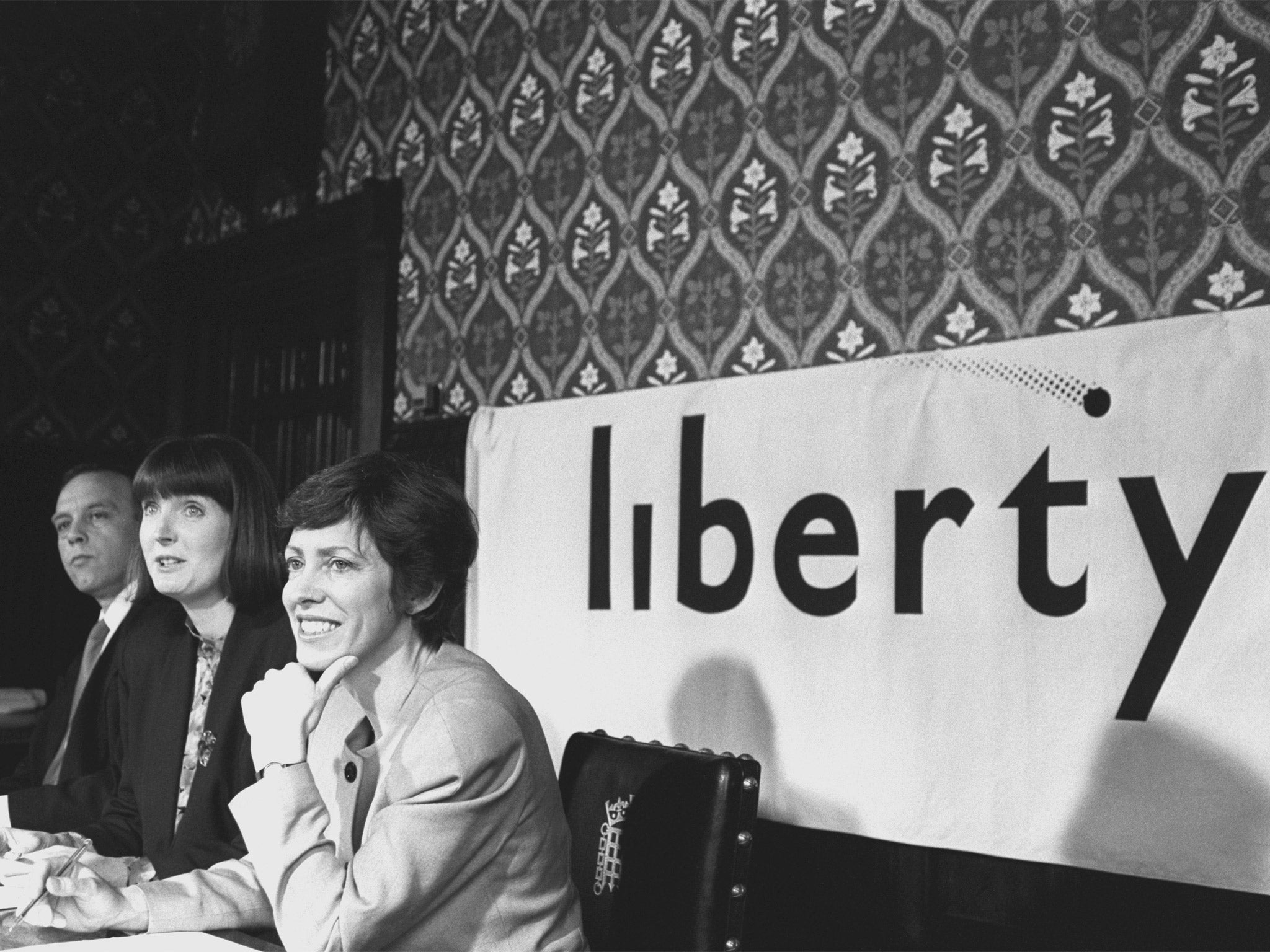Looking back to the great British paedophile infiltration campaign of the 1970s
The furore about links between senior Labour figures and a pro-paedophilia activist group has its roots in a half-forgotten cultural revolution

Your support helps us to tell the story
From reproductive rights to climate change to Big Tech, The Independent is on the ground when the story is developing. Whether it's investigating the financials of Elon Musk's pro-Trump PAC or producing our latest documentary, 'The A Word', which shines a light on the American women fighting for reproductive rights, we know how important it is to parse out the facts from the messaging.
At such a critical moment in US history, we need reporters on the ground. Your donation allows us to keep sending journalists to speak to both sides of the story.
The Independent is trusted by Americans across the entire political spectrum. And unlike many other quality news outlets, we choose not to lock Americans out of our reporting and analysis with paywalls. We believe quality journalism should be available to everyone, paid for by those who can afford it.
Your support makes all the difference.Looking back from 2014, it seems extraordinary that an organisation with a name like the Paedophile Information Exchange was taken so seriously for a time in the 1970s that it was able to present itself as a legitimate pressure group. Yet the continuing row involving Harriet Harman, Patricia Hewitt, Jack Dromey and the Daily Mail reminds us that this was indeed the case.
While superficially it may seem that there were a lot of gullible people in the 1970s prepared to consider PIE’s arguments, the reality is more complex. The boundaries of what was acceptable in terms of sexual behaviour were changing rapidly. Homosexuality had been decriminalised in 1967 but there was still considerable discrimination against gay people. Gays were beginning to hold demonstrations; even the word “gay” was just starting to be accepted.
The wider political movement of the libertarian left encompassed a whole range of other issues, from abortion rights and domestic violence to getting troops out of Northern Ireland and supporting liberation movements in third world countries. Naturally a lot of confusion ensued about what was acceptable and where the boundaries should lie.
Into this maelstrom plunged PIE, which was formed in 1974 by a group of paedophiles who defined themselves as child lovers – as the word literally means in Greek – rather than necessarily being interested in sex with children. The strategy was masterminded by Tom O’Carroll, the organisation’s public face. (This did eventually cost him his job as press officer for the Open University.)
PIE’s aim was “to alleviate suffering of many adults and children” by campaigning against the laws on the age of consent, to allow adults to have sex with children. Knowing that the idea of middle-aged men buggering young children was an unpalatable image to promote, members transformed their message into a language of liberation in tune with the zeitgeist. Since the Gay Liberation Front represented homosexuals and the feminist movement supported women, paedophile activists could be for children’s rights. People interested in children were to be considered as “kind persons”. just as homosexuals had managed to appropriate the word “gay”. It seems a preposterous plan; but for a while it came close to working.
Under O’Carroll’s astute leadership, PIE developed a strategy to infiltrate the wider libertarian movement. I had personal experience of this. I worked for Release, an agency that helped people with legal and drug problems. When I started there in 1976, PIE was using its address, the respectable sounding 1 Elgin Avenue, London W9. There were plenty of offices available, but allying itself with the Home Office-funded Release and an auspicious address gave PIE respectability. When I asked other members of the collective about it, they were very vague, and so we invited a speaker from PIE to a meeting. He gave us the benefit of his views, which were not only that there should be no age of consent, but that by banning underage sex adults were actually being cruel to children by denying them their sexuality and excluding them from an enjoyable experience. The poste restante arrangement was ended forthwith.

The man from PIE had, however, gone off-message. That was because he had been challenged and forced to answer the questions which PIE members normally avoided. The image O’Carroll was trying to sell was very different. Armed with its soft child-liberation message, PIE set about infiltrating that diffuse and divided movement characterised by the term “libertarian left”. This was, after all, the era of Militant’s attempts to take over the Labour Party and of the Socialist Workers Party, whose tactic was to infiltrate all areas of the left by hijacking other organisations’ political campaigns. The National Council for Civil Liberties was an early target.
It was in the gay movement, though, that PIE really hoped to establish itself. Gays and paedophiles were both oppressed minorities; consequently, argued PIE, they should do battle together. It was a seductive argument. In my 2000 book, Forgotten Children, I quote Andrew Lumsden, a former editor of Gay News, as saying: “We were fighting against a lot of outmoded laws, and perhaps the ones against paedophilia were as outmoded as those against homosexuality or cannabis.” It was precisely that thought that PIE was trying to instil among the organisations it targeted.
Ultimately, the argument did not wash. PIE attempted to get a regular listing in Gay News as a helpline and tried to persuade the Campaign for Homosexual Equality to support the “liberation of paedophiles”. But the early gay campaigners realised the last thing they needed was an association with paedophiles, and PIE was rebuffed.
PIE had outriders, too, who helped its cause through sympathetic analysis of its activities. The most prominent was Peter Righton, a respected social worker and educator who was director of education at the National Institute of Social Work in the mid-1970s, as well as being a consultant for the National Children’s Bureau. He was widely regarded as an expert on residential care.
Yet, despite these positions at the heart of the child welfare movement, he was quite open in putting forward views that seemed on the border of legality. In 1977, in an article in Social Work Today, he was quoted as saying that sex between workers and residents in homes was perfectly acceptable. “Provided there is no question of exploitation, sexual relationships freely entered into by residents – including adolescents – should not be a matter for automatic inquiry,” he wrote. Later, in a contribution to a book called Perspectives on Paedophilia, he tried to distinguish between paedophiles and child molesters: “Most child molesters, if paedophile at all, are so only incidentally. Most of those I have called ‘dispositional’ paedophiles, when they engage in sexual activity with children, do not molest them... On the contrary, the child’s consent is usually of cardinal importance to them.” The very fact that Righton could publish such a work and yet retain his standing in the wider social work movement is a key insight into the confusion over sexuality that characterised this era. Righton, now dead, was convicted of importing illegal pornographic material in 1992 and has been subsequently accused of abusing young boys.

The consequences of this type of confusion sown by the likes of Righton were far-reaching. There were countless abuse scandals in children’s homes. Some, indeed, as in Islington, were clearly targeted by individuals seeking sexual gratification, either by getting a job there or by befriending residents. Most, however, were the result of lax standards and a lack of clarity about boundaries. The way these were blurred was highlighted by a youth social worker who told me: “If we opened a door and saw a worker having sex with a resident, we would probably have just shut the door again.” That is the perfect illustration of how Jimmy Savile and his fellow celebrities got away with what they did.
O’Carroll was put on trial following a News of the World exposé and subsequent police investigations, but the police had been unable to find any hard evidence of abuse and had therefore gone for the extremely vague common law offence of “conspiracy to corrupt public morals”.
In a pamphlet, PIE characterised the prosecution as a “show trial”. It was all couched in kids’ lib terms: “We can be certain of a clampdown on the autonomous activities of children inside the family in all spheres of life, and specifically of an attempt to smash any gay youth groups. And we can be certain of a concentrated effort to split the women’s movement on the question on which they have been historically the weakest: paedophilia and child sexuality.” That did not save O’Carroll. He was given a two-year sentence, and that spelt the demise of PIE.
Ultimately, however, some of the confusion of that time remains. O’Carroll, who wrote a book recently on Michael Jackson’s bizarre relationship with children, is still arguing that sexual activity with children does not cause harm. He has even attracted some support within academic circles. Even now, it seems, we haven’t learnt.
Christian Wolmar is author of ‘Forgotten Children: The secret abuse scandal in children’s homes’ (available on Kindle via Amazon) and was until recently a trustee of the Railway Children, a charity supporting vulnerable children
Join our commenting forum
Join thought-provoking conversations, follow other Independent readers and see their replies
0Comments